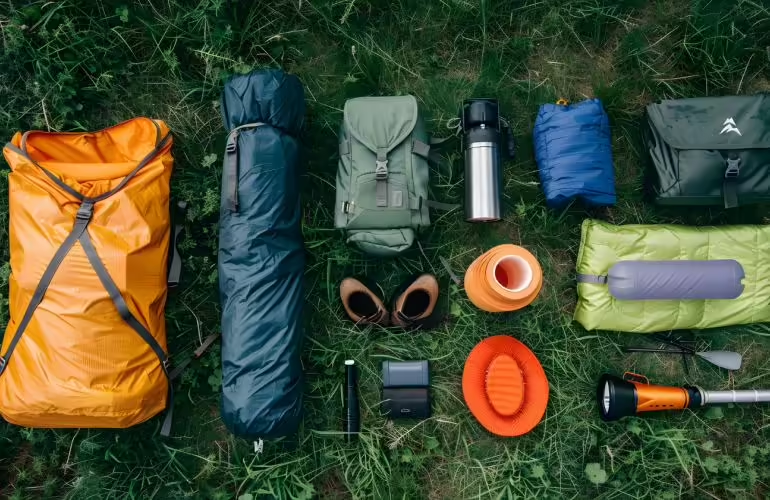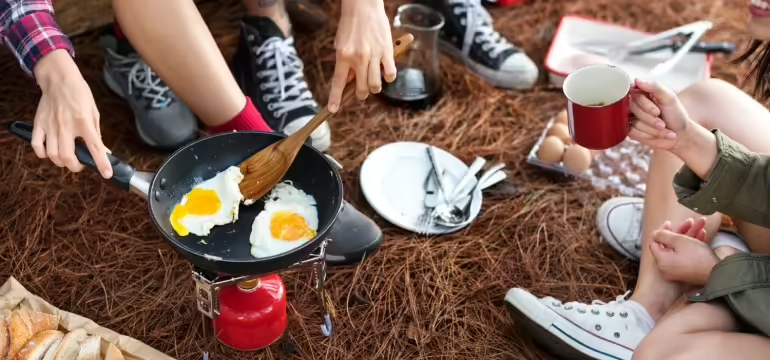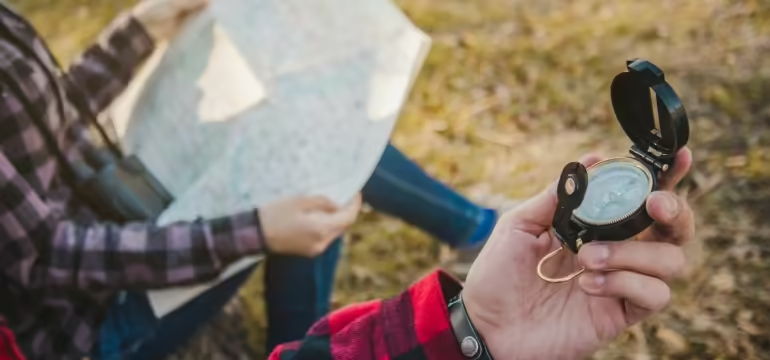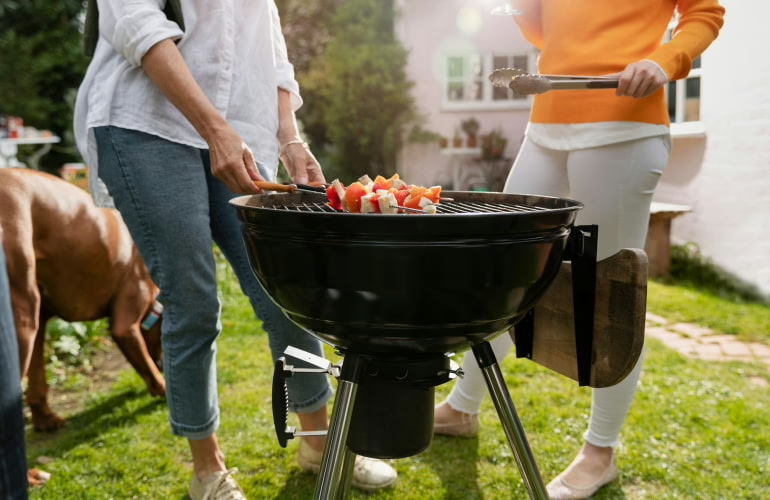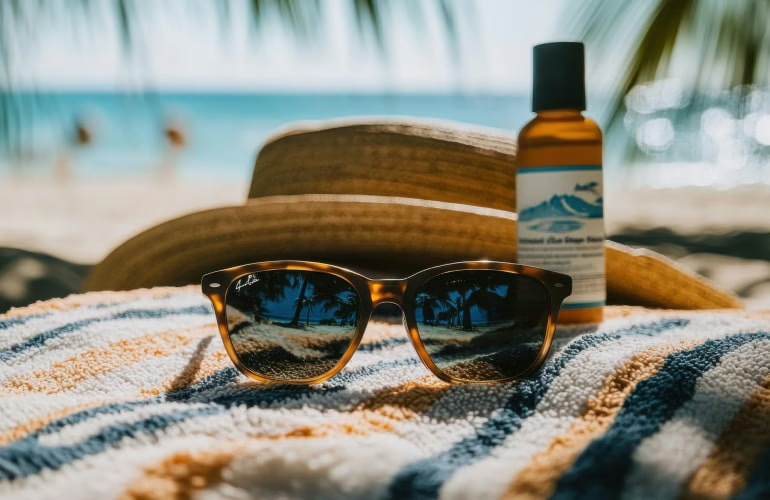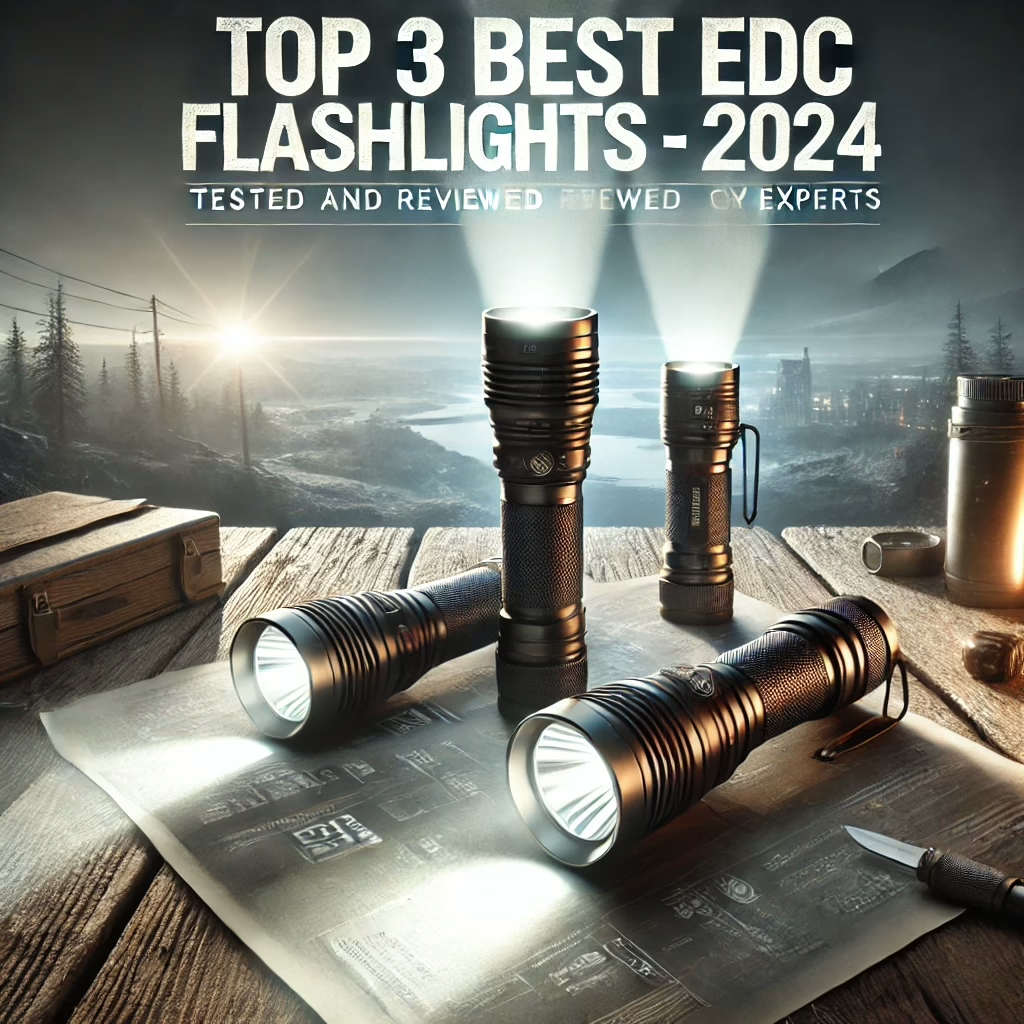Advertising Disclosure
Essential Camping Gear: What You Need for a Great Outdoor Adventure
Camping is a timeless activity. It offers a unique blend of:
- Adventure.
- Tranquility.
- Connection with nature.
Whether you’re a seasoned camper or a first-time explorer, it doesn’t matter. Having the right tools is vital. It’s essential for a comfortable and enjoyable experience. A well-packed camping gear checklist can ensure you’re ready for any situation. It’s from a comfortable weekend getaway to a multi-day expedition.
We will go from the basics like a tent and sleeping bag to specialized tools for activities like hiking or fishing. Each item is a vital one for creating a memorable outdoor day.
In this “What is needed for camping?” guide, we’ll delve into the essential item that every outdoor enthusiast must consider. We will help you make informed decisions and maximize your time in the wilderness.
Basic Camping Gear for Every Camper
Going on a trip needs thoughtful preparation of camping necessities. It’s to ensure a comfortable and enjoyable day. The right tools can make all the difference in your adventures. The crucial gear can range from warmth and protection against the elements to essential amenities. Having the necessary items in your backpack is crucial. In the next blocks, we will talk about them in detail.
Choosing the Right Tent for Your Camping Trip
This is probably one of the most essential things to take. It’s an essential shelter in the outdoors. It offers protection from rain, wind, and other elements. When selecting it, consider several factors:
- Size. Select an item that accommodates your group comfortably. It must allow for enough space to move around and store gear.
- Weather Resistance. Opt for one with a waterproof and durable outer layer. It’s to withstand rain and wind.
- Ease of Setup. Look for a tent that is easy to set up and take down. It’s especially vital for your camping needs if you’re a beginner.
- Privacy. Finally, think about the desired level of ventilation and privacy. These features can significantly impact your comfort during your trip. By carefully evaluating these factors, you can choose a shelter that provides the ideal space for your outdoor days.
Sleeping Bags and Pads: Comfort in the Wilderness
A good night’s sleep is crucial after a day of strenuous hiking and setting up camp. Sleeping bags and pads provide insulation and comfort. It’s especially important during your outdoor days. So, you must consider:
- Temperature Rating. Choose a product with a temperature rating appropriate for the climate you’ll be staying in.
- Insulation. Consider insulation types. Consider those like down or synthetic materials. Each has its own pros and cons. So, read or watch tutorials before buying an item.
- Sleeping Pads. This one provides cushioning and insulation from the ground. Look for options with R-values. Those match the temperature rating of your sleeping bag.
Extra Things you need for camping:
- Backpack. A sturdy item is essential. It’s because you will be carrying your camping gear all day or days long.
- Cooking Equipment. A camping stove, cookware, and utensils are necessary. It’s for preparing meals.
- Water Storage. Bring a water bottle or hydration pack. It’s vital to stay hydrated.
- First Aid Kit. A well-stocked first aid kit is a must-have for treating minor injuries. Look for ready kits or gather all the important equipment by yourself.
- Lighting. A headlamp or flashlight is essential. It’s for navigating your area at night.
- Clothing. Pack appropriate, weather-appropriate clothing. It includes layers for changing temperatures.
Remember, the specific tools you need may vary. It depends on the type of camping you’re doing (e.g., backpacking, car camping, or winter camping). It’s always a good idea to research and plan accordingly. It’s to ensure you have everything you need for a successful outdoor day.
Cooking and Nutrition in the Great Outdoors
Cooking and nutrition are essential aspects of any successful trip. In the great outdoors, the ability to prepare delicious and nutritious meals can enhance your experience. And it will ensure your well-being. From choosing the right tools to planning balanced meals, there are several key factors to consider. In the next blocks of this first-time camping checklist, we will delve into the details. We will consider cooking and nutrition in the wilderness. We will provide valuable tips and recommendations. They are to help you make the most of your meals.
Must-Have Cooking Gear for Campsite Meals
Having the right cooking gear is essential. It’s for preparing delicious and convenient meals during your camping trip. You may be a seasoned camper or a beginner. However, a well-equipped kitchen will make your outdoor cooking experience enjoyable and efficient. In the next “stuff to bring for camping” blocks, we will discuss some must-have cooking items. They are from portable stoves and cookware to essential utensils and accessories:
- Portable Stove. A reliable portable stove is essential for cooking your meals. Consider options like propane stoves, wood-burning stoves, or backpacking stoves. It depends on your camping preferences and the type of fuel available.
- Cookware. A basic cookset is what you also must take on camping. It includes a pot, pan, and utensils. It’s sufficient for most camping meals. Look for lightweight and durable options that are easy to clean.
- Utensils. Bring essential utensils like a spoon, fork, knife, and can opener. Consider a multi-tool that combines several utensils into one.
- Fuel. Ensure you have enough fuel for your stove, whether it’s propane, wood, or fuel canisters.
Planning Your Camping Meals: Tips and Tricks
Planning your camping meals is essential. It’s for a successful and enjoyable outdoor adventure. Consider your dietary needs, preferences, and the specific conditions of your trip. This will help you create a menu that provides nourishment, satisfies your taste buds, and reduces waste. In the next “camping necessities ” blocks, we will offer valuable tips and tricks:
- Plan Ahead. Before your trip, create a meal plan that includes breakfast, lunch, and dinner options. Consider the ingredients you’ll need and the cooking methods involved.
- Pack Wisely. Choose foods that are lightweight, non-perishable, and easy to prepare. Pack ingredients in airtight containers to prevent spills and contamination.
- Dehydrated Meals. Dehydrated meals are a convenient and lightweight option for camping. They require minimal preparation and can be enjoyed with just hot water.
- Fresh Produce. Incorporate fresh produce into your meals. Choose items that are durable and can withstand transportation. Consider fruits and vegetables that are high in nutrients and easy to eat.
- Protein Sources. Also, among everything you need for camping is protein. Include protein sources like meat, poultry, fish, beans, or nuts to ensure a balanced diet.
- Hydration. Stay hydrated by drinking plenty of water throughout the day. Consider carrying a water filtration system or purification tablets. It’s to treat natural water sources.
Additional Tips:
- Food Safety. Practice proper food safety measures to prevent foodborne illness. Keep perishable foods refrigerated or insulated, and wash hands and cooking surfaces regularly.
- Leave No Trace. Follow Leave No Trace principles by packing out all food waste and minimizing your impact on the environment.
- Cooking with Nature. Consider incorporating local ingredients and cooking techniques into your camping meals. It’s for a more authentic experience.
By planning what to bring for camping, packing the right gear, and practicing proper food safety, you can enjoy delicious and nutritious meals while camping in the great outdoors.
Navigational Tools and Safety Equipment
Navigational tools and safety equipment are essential. It’s for any camping trip, especially in remote or unfamiliar areas. These tools can help you stay oriented, avoid getting lost, and respond to emergencies effectively. Let’s take a closer look at this camping gear checklist.
Maps and Compasses: Classic Navigation Tools:
- Maps. Topographic maps provide detailed information about the terrain, including elevations, trails, and landmarks. Choose a map that covers the area you’ll be exploring.
- Compasses. A compass is a reliable tool for determining direction, even in cloudy conditions. Learn how to use a compass properly to navigate accurately.
GPS Devices: Modern Navigation Aids:
- GPS devices. GPS devices can provide precise location information, even in remote areas. They can also display maps, track your route, and guide you to your destination. Consider a GPS device with offline maps for areas with limited cellular coverage.
First Aid Kits: Items Needed for Camping Emergencies:
- First aid kits. A well-stocked first aid kit is a must-have for any camping trip. It should contain essential supplies. They are like bandages, antiseptic wipes, pain relievers, and a tourniquet.
- Basic First Aid Knowledge. Learn basic first aid skills to respond to common injuries and illnesses. Consider taking a first aid course for more advanced training.
Additional Safety Considerations:
- Emergency Whistle. A whistle can signal for help in case of an emergency.
- Headlamp or Flashlight. A reliable light source is essential for navigating in low-light conditions.
- Fire Starter. A fire starter can create a fire for warmth, cooking, or signaling.
- Weather Gear. Be ready for changing weather conditions with appropriate rain gear, warm clothing, and a waterproof shelter.
Remember, even with the best navigational stuff to bring for camping and safety equipment, it’s important to use common sense and exercise caution while camping. Be aware of your surroundings, plan your route carefully, and inform someone of your itinerary before you leave.
Personal Items and Extras for Enhanced Comfort
The essentials listed above are crucial for any camping trip. However, there are additional items that can enhance your comfort and overall experience. From toiletries and entertainment to luxury items, these extra elements for camping needs make your experience more enjoyable. In the next blocks, we will explore a variety of personal items and extras. These will help you create a more comfortable and personalized experience.
Clothing and Footwear: Dressing for the Outdoors:
- Weather-appropriate clothing. Pack layers of clothing to adjust to changing temperatures. Make a camping essentials list of waterproof jackets, rain pants, and warm insulation for colder weather.
- Comfortable footwear. Choose sturdy and comfortable footwear suitable for hiking and walking on uneven terrain. Consider trail running shoes or hiking boots with good ankle support.
- Sunglasses and a hat. Protect your eyes and head from the sun with sunglasses and a hat.
Personal Hygiene and Comfort: Staying Clean and Fresh:
- Toiletries. Pack essential toiletries like toothpaste, toothbrush, soap, and a towel. Consider biodegradable alternatives for minimizing environmental impact.
- Camping pillow. A camping pillow can improve your sleep comfort and prevent neck pain.
- Insect repellent. Protect yourself from insect bites with a suitable insect repellent.
- Sunscreen. Apply sunscreen with a high SPF to protect your skin from harmful UV rays.
Camping Trip Checklist: Leave No Trace:
- Pack it in, pack it out. Practice Leave No Trace principles by packing out all trash and waste. Avoid leaving anything behind that could harm the environment.
- Minimize impact. Choose campsites that minimize your impact on the natural surroundings. Avoid disturbing wildlife and sensitive ecosystems.
- Respect nature. Leave natural features undisturbed and avoid collecting plants or disturbing wildlife.
Additional Extras for a Basic Camping List:
- Books or magazines. Bring reading material for entertainment and relaxation.
- Camera or binoculars. Capture memories and observe wildlife with a camera or binoculars.
- Games or puzzles. Enjoy recreational activities and pass the time with games or puzzles.
- Music player. Listen to music or podcasts to enhance your camping experience.
Consider these additional items for a basic camping list and practice responsible camping habits. Then, you can create a more appropriate and enjoyable outdoor adventure. At the same time, you will minimize your impact on the environment. Remember to pack items like a first-aid kit, a multi-tool, and a headlamp for unexpected situations. Also, don’t forget to bring biodegradable soap and toilet paper. This helps reduce your environmental impact.
When camping, always leave no trace. This means packing out all your trash. It includes food scraps and cigarette butts. Avoid disturbing wildlife and their habitats. And choose designated campsites to prevent damage to fragile ecosystems. By following these tips, you can ensure that your camping experience is both enjoyable and sustainable for future generations.
